
From left to right, flowers of Oni-itaya ( f. ambiguum),
Enkoh-kaede ( f. dissectum) and Itomaki-itaya ( f. savatieri)
Let me show you 7 typical kinds of Acer mono (Acer pictum) in Japan here as follows.
Enkoh-kaede ( f. dissectum), Taishaku-itaya ( f. taishakuense),
Urajiro-itaya ( f. glaucum),
Aka-itaya ( f. mayrii), Ezo-itaya
( f. mono), Oni-itaya ( f. ambiguum) and Itomaki-itaya ( f. savatieri).

Well, let me show you Enkoh-kaede ( f. dissectum) that is seen
near mountains not so high.
The lobes of their leaves are not so wide and
the image of the leaves
look like monkey's hand, they are called Enkoh-kaede.
Enkoh means monkey.
Another name of Acer mono ssp. marmoratum is Enkoh-kaede ( f. dissectum).
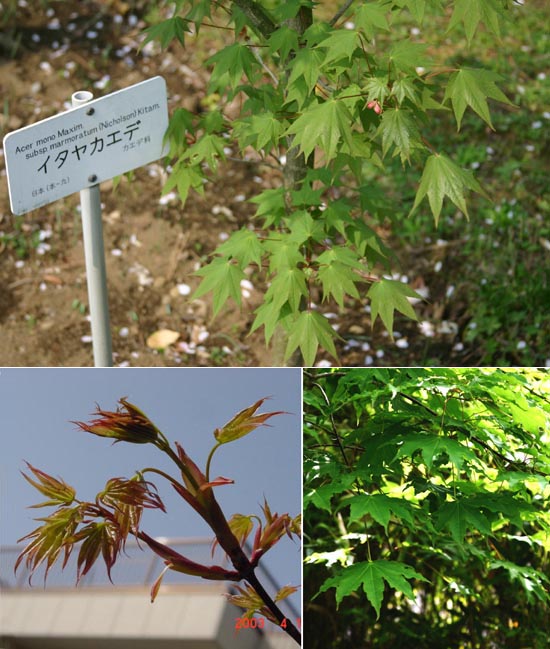
Upper : Enkoh-kaede ( f. dissectum) at Koishikawa Botanical Garden
Lower : Sprouting & Summer leaves of Enkoh-kaede ( f. dissectum)
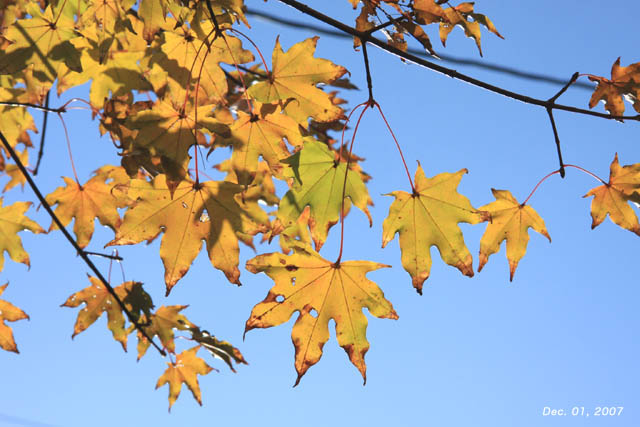
Autumn colors of Enkoh-kaede ( f. dissectum) in my garden
Secondly, let me show you Taishaku-itaya ( f. taishakuense) and
Urajiro-itaya ( f. glaucum)
whose leaves are similar to those of Enkoh-kaede
( f. dissectum) in size and shape.
Taishaku-itaya ( f. taishakuense) is only found on limestones of Taishaku-kyo Valley in Hiroshima Pref. in Japan.
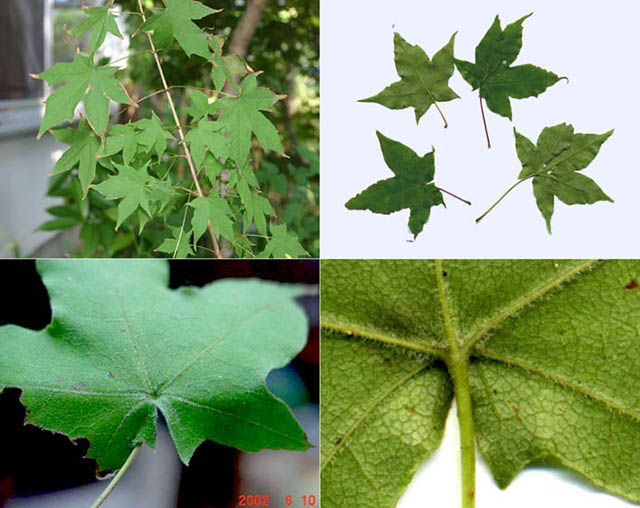
UL : Young tree of Taishaku-itaya ( f. taishakuense), UR : Leaves of Taishaku-itaya ( f. taishakuense)
LL : Pilose along the main veins of the upper surface, pilose on the whole upper surface in this picture.
LR : Leaves beneath also pilose on the whole lower surface and
on the petiole.
Then, Urajiro-itaya ( f. glaucum), which are distributed in Niigata, Yamagata and Fukushima Pref.
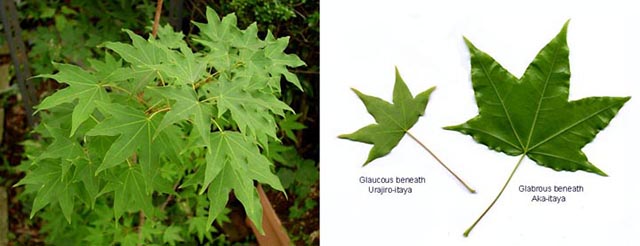
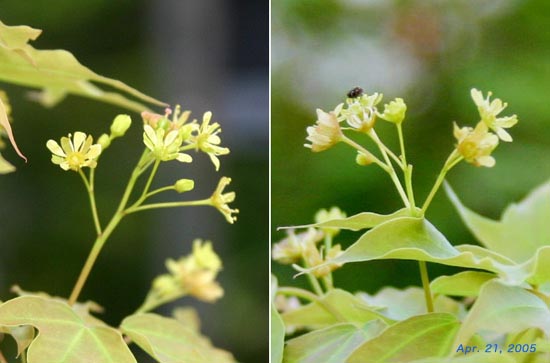
Flowers of Urajiro-itaya ( f. glaucum)
Nextly, let me show you Aka-itaya ( f. mayrii), Ezo-itaya ( f. mono),
Oni-itaya ( f. ambiguum) and Itomaki-itaya ( f. savatieri). These
trees are large.
Aka-itaya ( f. mayrii) is distributed in Hokkaido and Honshu,
Ezo-itaya
( f. mono) in Hokkaido and nothern Honshu,
Oni-itaya ( f. ambiguum)
in almost all over Japan,
and Itomaki-itaya ( f. savatieri) mainly
limited to Central Honshu.
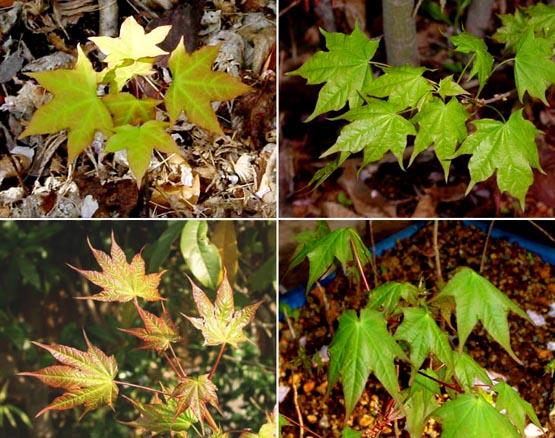
New leaves of Aka-itaya ( f. mayrii) is remarkably reddish as the
picture below shows.
In spring it is easy for us to find Aka-itaya with
yellow flowers in the forest.
So, it was named Aka-itaya, and "aka"
means "red".
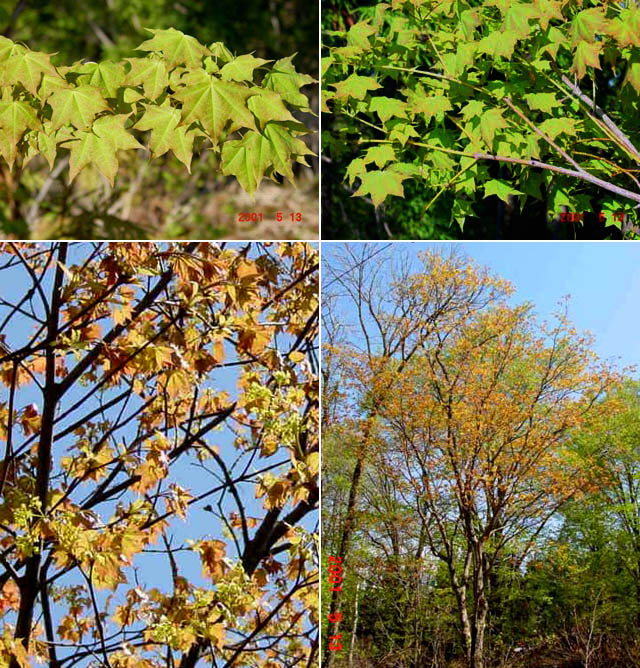

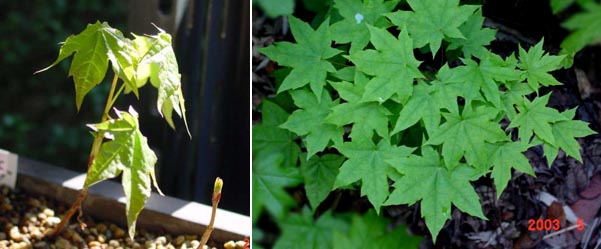
Next, let me show you Oni-itaya ( f. ambiguum).
Leaves of Oni-itaya
( f. ambiguum) are peculiarly covered with short hairs all over the
underside.
So, we can easily identify oni-itaya by finger feeling of the
hairs.
The following picture shows that the hairs can be obserbed by scanning
of folding leaf.


UL : Oni-itaya at Taishaku Valley, UR : Mosakubo Hamamatsu
LL :
Kyoto,
LR : garden in Hamamatsu
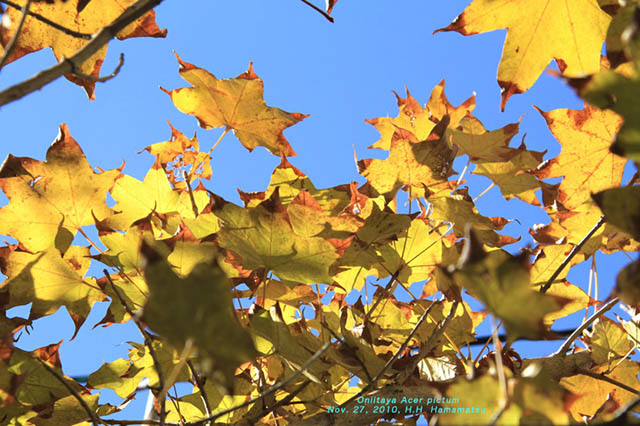
Autumn colors of Oni-itaya ( f. ambiguum) in my garden
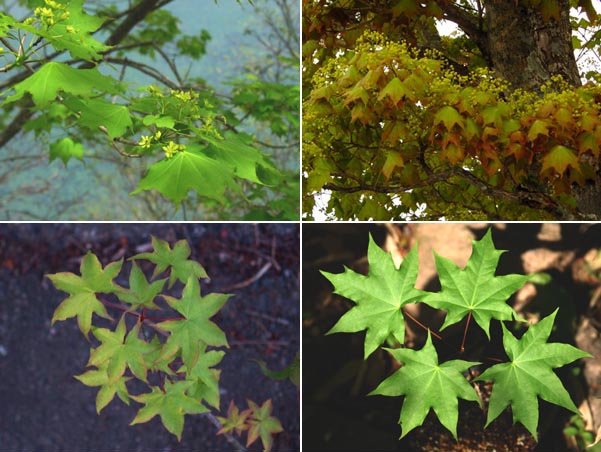
Flowers & summer leaves of Itomaki-itaya ( f. savatieri)
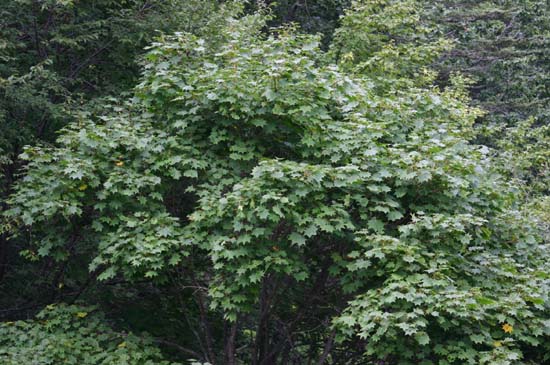
Scene of Itomaki-itaya ( f. savatieri) at the Mikuni pass
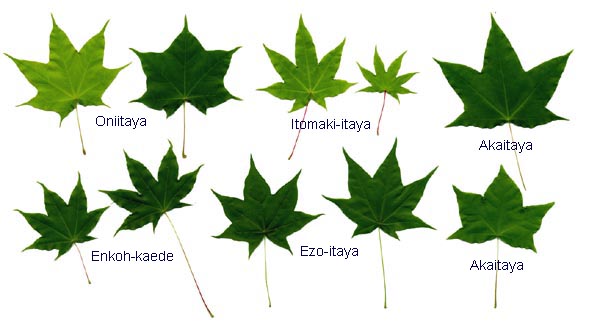
Lastly, let me show you 4 pictures of basal axils on the under surface and the apex of the petioles for comparison.
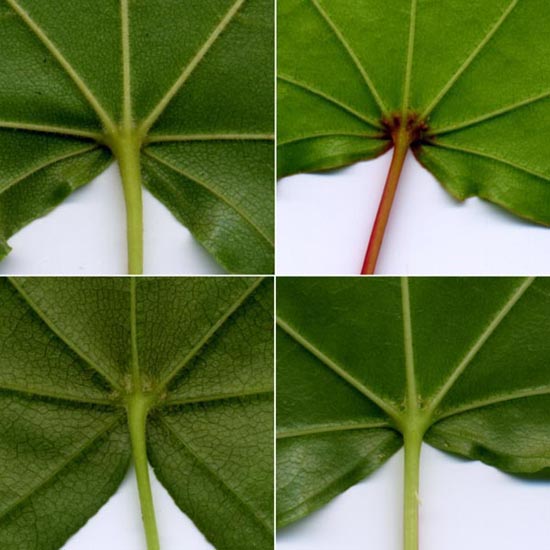
Upper left : Oni-itaya ; Hairs on petioles & main veins,
short hairs all over the underside
Upper right : Itomaki-itaya ; Thick brown-villose on the basal axils &the
apex of the petioles
Lower left : Ezo-itaya ( f. mono) ; pubescent with the base of the
petioles of leaves
Lower right : Aka-itaya ; glabrous beneath except the base of main veins
and the apex of the petioles
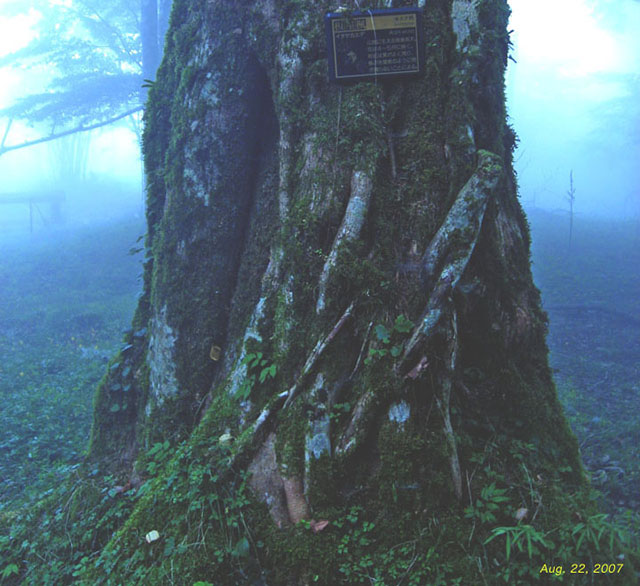
A big tree at Nishi-usutuka, Acer pictum of a round of trunk : 365cm
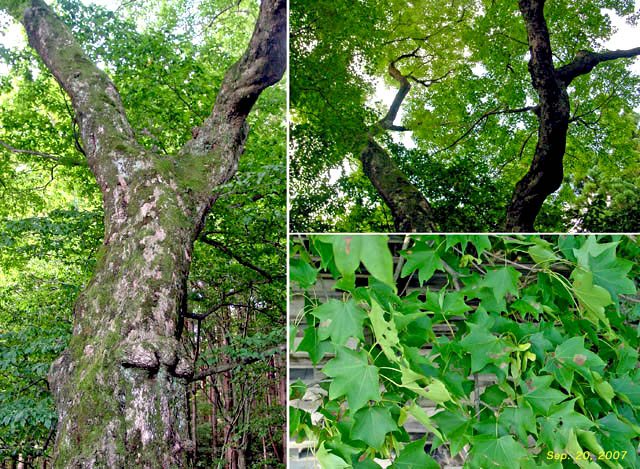
Aka-itaya ( f. mayrii) at Yamagami shrine Takisawa village Iwate Pref.
25m tall, aroung of trunk 391cm, about 300 years old
Recent images are added.
Firstly, flowers of Enkoh-kaede ( f. dissectum)
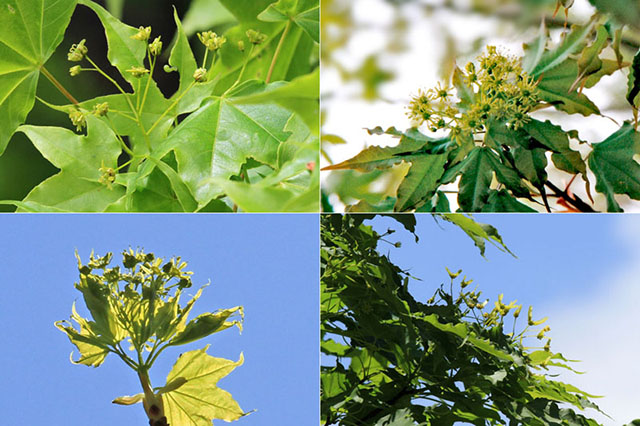
Upper left : Misakubo Yamazumi Shizuoka Pref., upper right : unknown
Lower left : Chausu-yama Highlands Nagano Pref., lower right : Lake Motosuko Yamanashi Pref.
Secondly, flowers of Oni-itaya ( f. ambiguum)
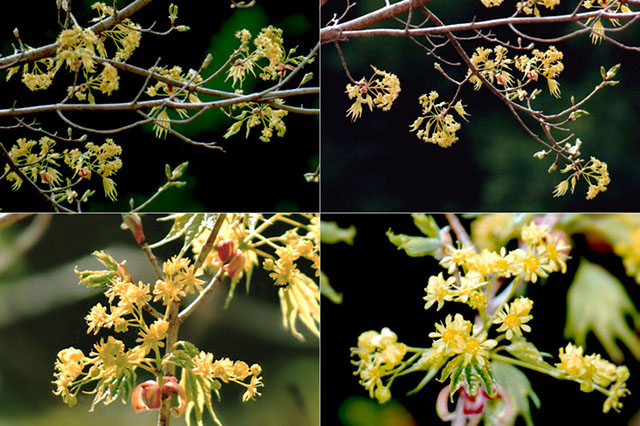
All 4 are from Ashigami shrine Misakubo Okuryohke Shizuoka Pref.
Thirdly, flowers of Itomaki-itaya ( f. savatieri)
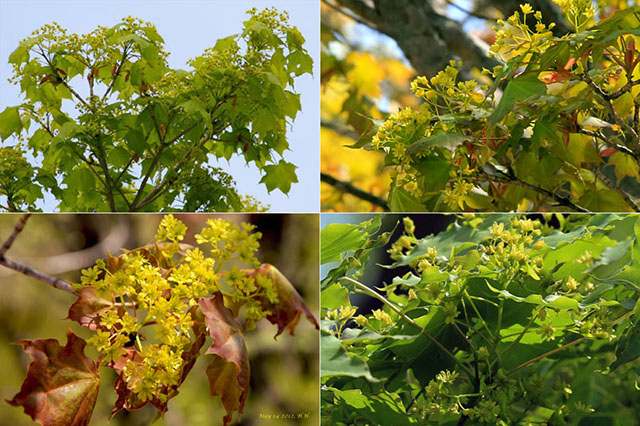
Upper left : Chausu-yama Highlands Nagano Pref., upper right : Chausu-yama Highlands Nagano Pref.
Lower left : Chausu-yama Highlands, lower right : Suyama Susono city Shizuoka Pref.
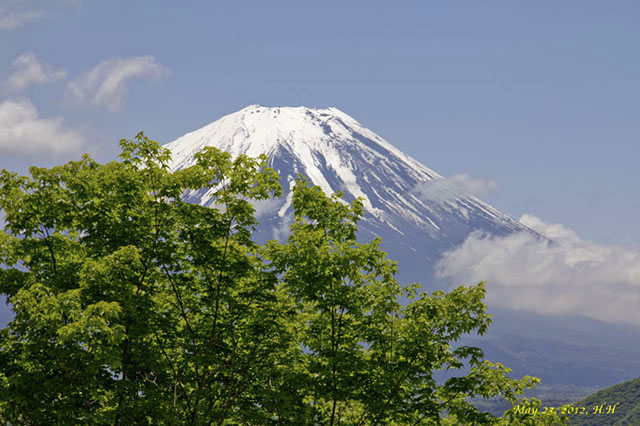
Mt. Fuji and New young leaves of Enkoh-kaede ( f. dissectum) around Lake Motosu Yamanashi Pref.